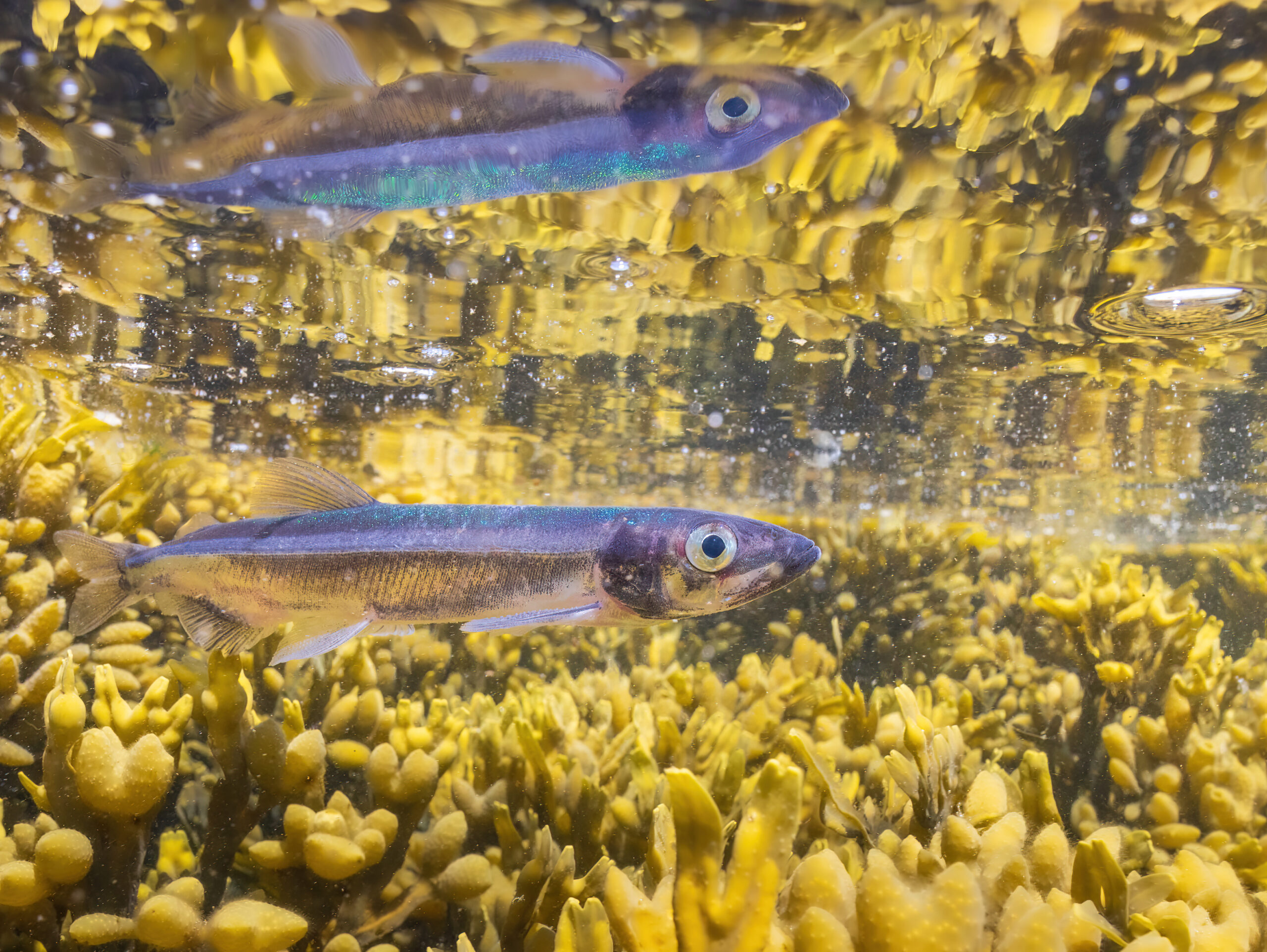
SIZE:
13 cm to 20 cm, up to 25 cm; weight ranges from 40 to 45 g.
LIFE EXPECTANCY:
Up to 5 years.
LIFE CYCLE:
Sexual maturity is attained around 3 years of age.
In spring, the adults form large, tightly packed schools and start their migration to the spawning grounds. The males arrive first on the coast and are then joined by the females.
Between April and July, usually at night, capelin “roll” along beaches and sandy bottoms. To reproduce, the male clings to the female. The female contains between 6,000 and 12,000 eggs. Together, they dig the sand and deposit the eggs. Because of a sticky protective substance, the eggs remain on the sand until they hatch 15 to 20 days later.
After breeding, most capelin die of exhaustion or injuries sustained during mating.
Cucumber?
If you smell something like cucumber on the beach, look for the rolling capelin. Capelin give off this sweet scent when they spawn.
Capelin is a small fish with a slender, elongated body. Its head is triangular with a slightly forward jaw. Its back is olive. Its belly is silvery white, and its sides are grey. It has a high dorsal fin.
At spawning time, the male’s fins lengthen and some of its scales grow into hair-like growths.
In the water column, up to 725 m depth offshore, but on average down to 200 m.

During spawning, capelin migrate close to the coast or on the sea bottom.
Credit: Jean-Christophe Lemay, photo taken off Baie-Comeau, in 2021.
PREYS:
Plankton
PREDATORS:
Cod
Halibut
Seals
Whales
Belugas
Porpoises
Northern gannets
Capelin is a “forage” species, meaning that it serves as food for numerous marine species. It is therefore of particular importance to the ecosystem.
MACHINES:
Purse seine, weir.
REGULATIONS:
This type of fishing mainly targets egg-bearing females. These are luxury products in Japan and other Asian countries. The other capelin catches are used to produce bait, fertilizer, oil and meal for animal feed.
Mainly practised along the lower North Shore and in the fixed-gear fisheries of the St. Lawrence estuary.
Recreational fishing
Know nothing about fishing? No problem. You can fish for capelin by walking along the shore and fish without a permit. All you need is a landing net. Your hands can even do the trick. Do not forget to bring a bucket to hold your catch.
Fishing for capelin is a fun activity and a good excuse to gather on the beach, around a fire, waiting for the silvery waves of capelin to arrive.
Capelin is a Smarter seafood-listed species.
BENEFITS:
Capelin is rich in protein, omega-3 fatty acids, calcium, and potassium. The eggs are rich in protein and vitamin B12. However, they are not recommended for people with high blood pressure.
LET’S COOK:
Capelin eggs, called masago in Asian cuisine, go well with sushi.
Traditionally, capelin was preserved and eaten salted and dried, as a snack. It can be eaten whole with the head or filleted. The bones are easy to remove from the cooked flesh. It can also be fried, marinated or smoked.
OUR CULINARY ADVICE:
- If you are going capelin fishing, light a fire and cook the fish directly over it. You can also roll the capelin in flour and salt before grilling.






